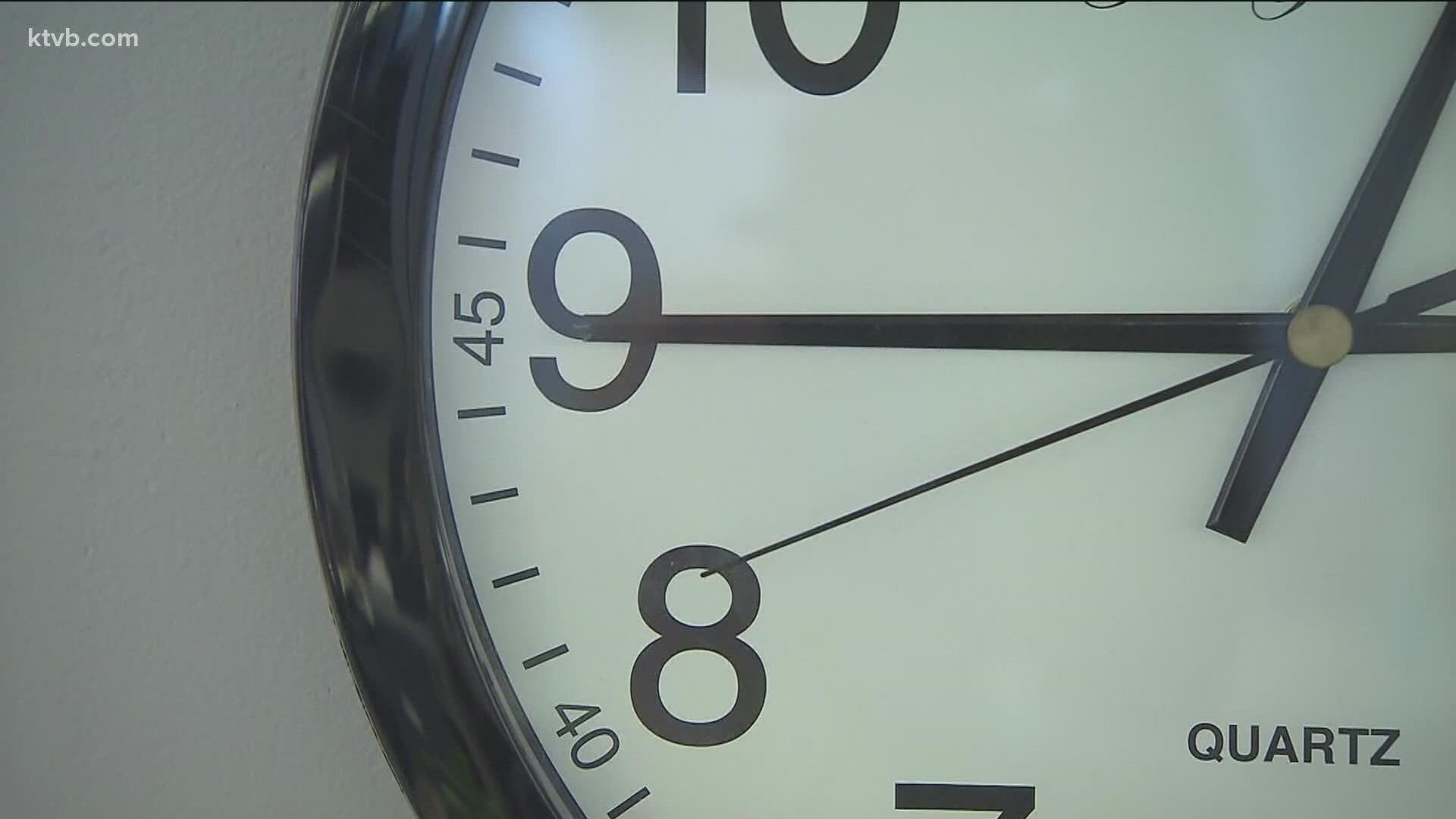BOISE, Idaho — The U.S. Senate unanimously passed the Sunshine Protection Act, which would make daylight saving time permanent starting in November 2023 -- no more "falling back" an hour. The bill is still subject to approval by the U.S. House and President Joe Biden.
Moving to permanent daylight saving time would mean more hours of light in the evenings, but darker mornings in the winter months. This is good news for people who like to sleep in, but it would affect those who go to school or work early in the morning.
In southern Idaho, this would mean that it would remain dark until 9 a.m. from late November until early February, and kids would be going to school in the dark for a good portion of the school year.
The American Academy of Sleep Medicine published a statement in 2020 supporting a fixed year-round time. However, they argue DST abnormally delays sunlight which can throw off normal sleep cycles. That can result is health complications like an increased risk of heart disease according to AASM.
"A change to permanent standard time is best aligned with human circadian biology and has the potential to produce beneficial effects for public health and safety," AASM's statement concluded.
In 2019, Idaho lawmakers introduced legislation that would have eliminated DST in Idaho and kept the state on standard time year-round, but the bill was defeated in the House.
In the United States, DST became official in March 1918 with the adoption of the Standard Time Act.
"It allowed for additional daylight hours to be added into the day to help save energy costs during World War I. The law also established the five time zones that we now know," according to the Department of Defense website.
The daylight saving time law was repealed the following year, with the exception of the states and cities that opted to keep it on their own, but the time zones stuck.
Once again, war prompted DST in 1942 when Congress passed a law enacting it in an effort to conserve fuel. This federal "war time" went away in 1945, although local governments could make their own decisions whether to keep the change, and Congress continued to debate the complications that arose.
For the next two decades, there were no set rules for DST, causing a lot of confusion for the transportation and broadcast industries.
That changed for good in 1966, when Congress passed the Uniform Time Act which set a national standard time that permanently replaced local times. It established DST from the last Sunday in April to the last Sunday in October.
In the 1970s, America experimented with a year-round DST mandated by the Emergency Daylight Saving Time Energy Conservation Act that aimed to cut back on oil usage.
In 1973, Congress confirmed the measure and it was approved by President Richard Nixon. Within months, the national opinion of DST soured and pre-sunrise crashes increased.
A Congressional report stated there were particularly more fatalities among school-age children, but debated how much impact the darkness really contributed to safety concerns.
Congress and President George W. Bush approved the current DST policy in 2005. It extended DST by a few weeks, making it stretch from the second Sunday in March to the first Sunday in November.
While DST is a federal mandate, states can opt-out and stay on standard time year-round through state legislation. Hawaii and Arizona are two states that have chosen not to observe DST, though the Navajo Nation in northeastern Arizona does. Most American territories, including Puerto Rico and Guam, have also chosen not to observe the time change.
Watch more Local News:
See the latest news from around the Treasure Valley and the Gem State in our YouTube playlist:

